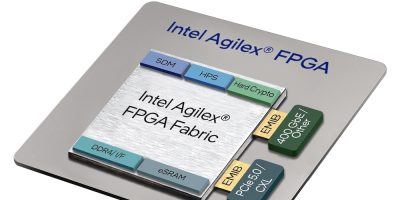Seamless visual experiences for cost-sensitive consumer devices are assured with the IMG CXM GPU of RISC-V compatible cores, said Imagination Technologies. The range includes what is claimed to be the smallest GPU to support HDR user interfaces natively.
The IMG CXM cores can lower the cost of DTV and other consumer devices in smart homes, for example, said Imagination. Another driver is content providers seeking to integrate 4K and HDR features to enrich content, continued the company.
There are three new configurations which extend the range of performance options already available in Imagination’s GPU family of products for the consumer space. Imagination has released the CXM-2-64, claimed to be the smallest GPU to support native HDR applications. It is suitable for wearable devices, SmartHubs or mainstream set-top boxes.
The CXM-4-64 is suitable for integrating into SmartHubs, set-top boxes or mainstream DTVs and the CXM-4-128 is a performance dense option for premium DTVs, advised Imagination.
The company has boosted the performance density of the IMG BXE and BXM range of GPUs for the CXM GPUs and added native support for HDR.
The CXM GPUs support 10bits RGBA / YUV to deliver a HDR graphical user interface with images with less visible banding. To smooth the outline of texts and images, they employ 4xMSAA (Microsoft Active Accessibility, an application programming interface (API) for user interface accessibility).
TFBCv2, the new generation of Imagination’s Tiny Frame Buffer Compression, delivers higher quality lossy / lossless compression and an additional compression level (37.5%) for improved design flexibility.
The IMG CXM GPU range boasts nearly a 50 per cent uplift in performance density compared to the IMG BXM range.
The IMG CXM is supported by software that supports APIs, including Vulkan 1.3, and has been optimised for leading CPU architectures including Arm and RISC-V application processors.
Dr. Charlie Su, CTO and president of Andes Technology said: “The RISC-V ecosystem is growing rapidly. To continue its growth and showcase the many possible ways it can be deployed, we partnered with Imagination to provide a quick and easy path to validated GPU and CPU IP blocks that can reduce SoC design time, risk, and cost for our customers. With Imagination’s flexibly designed GPU, and our AndesCore high performance, low power RISC-V CPU, we are able to satisfy the requirements for display-oriented SoC in a short time and generate the optimum configuration.”
James Chapman, chief product officer, Imagination Technologies commented the CXM GPUs will “transform user experiences” and he expects to see the GPUs deployed in a diverse range of applications from wearables to premium 8K DTVs.
Imagination will be demonstrating TFBCv2 at the 2023 RISC-V Con Shanghai and 2023 RISC-V Con Beijing events, hosted by Andes Technology.







